constituent assembly of india debates (proceedings)- volume vii
constituent assembly of india debates (proceedings)- volume vii
constituent assembly of india debates (proceedings)- volume vii
You also want an ePaper? Increase the reach of your titles
YUMPU automatically turns print PDFs into web optimized ePapers that Google loves.
Agriculture is mostly by the primitive method <strong>of</strong> jhuming and there are no educational facilities. The<br />
economic condition <strong>of</strong> the tract is pretty poor. The Kachin however are settled cultivators and are in a<br />
better position than the Nag a. In the Nag a Tribal Area head hunting is still practised and slavery also<br />
seems to exist.<br />
For the Tirap Frontier Tract also the five year plan approved by the Government <strong>of</strong> India<br />
contemplates the extension <strong>of</strong> the benefits <strong>of</strong> administration. The headquarters is proposed to be moved<br />
to a place in the interior called Horukhunma and hospitals and schools are to be constructed. Both in the<br />
Tirap Frontier Tract and the Naga tribal area the policy is just the same, namely the extension <strong>of</strong><br />
administration gradually up to the Burma frontier. This policy appears to us to be the correct one to<br />
follow, whatever the legal status <strong>of</strong> the area may be under the Government <strong>of</strong> India Act. As in the case<br />
<strong>of</strong> the MacMahon Line frontier, all the portion between the Burmese boundary and the administered area<br />
<strong>of</strong> Assam should be merged in Assam as soon as possible and the distinction between Tribal Area and<br />
administered Indian territory abolished.<br />
The Lakhimpur Frontier Tract need no longer be treated as an excluded area. As regards the portions<br />
<strong>of</strong> this tract taken over into the Tirap Frontier Tract the justification for continuing it as a frontier area<br />
needs to be further examined and if no difficulty is likely to be caused by the inclusion <strong>of</strong> the Kachins and<br />
other tribes who live there in the Lakhimpur district the area should be merged in the district. In the rest<br />
<strong>of</strong> the area, steps should be taken to organise non-statutory tribal councils, panchayats etc., in<br />
anticipation <strong>of</strong> the time when this tract will be fit for inclusion in the provincial administration. For the<br />
proper administration <strong>of</strong> the Naga Hills tribal area it would appear desirable to provide more <strong>of</strong>ficials, and<br />
a separate <strong>of</strong>ficer with headquarters as close as possible to the area, if not inside, is necessary. It would<br />
appear that there is already sanction for a separate Sub-divisional Officer at Mokokchung under the<br />
control <strong>of</strong> the Deputy Commissioner. Naga Hills district but the present arrangement by which the tribal<br />
area is shared between the Deputy Commissioner, Kohima, and the Political Officer. Tirap Frontier Tract,<br />
needs to be further examined. It would perhaps be best to divide the portion into two districts one which<br />
will in due course either merge with the existing Naga Hills district and form a sub-division there<strong>of</strong> or be<br />
a Konyak district, and another which will form a portion <strong>of</strong> another district under an <strong>of</strong>ficer with<br />
headquarters in the present Tirap Frontier Tract.<br />
4. NAGA HILLS DISTRICT -<br />
The Naga Hills District is an area <strong>of</strong> 4,289 square miles bounded on the east by the Naga tribal area,<br />
on the south by Manipur State and on the west by the Sibsagar district. The population was given as<br />
189,641 <strong>of</strong> which184,766 or 97.4 per cent were tribal, at the 1941 census. The district is inhabited by a<br />
number <strong>of</strong> Naga tribes notably the Angami, the Sema, the Lhota and the Ao. Of these tribes Angami are<br />
the most numerous and inhabit the area round Kahana, their number at the 1941 census being slightly<br />
over 52,000. The Aos are the next numerous numbering over 40,000 and the Semas come third with<br />
35,741. These two tribes inhabit the area round Mokokchung which is a separate sub-division <strong>of</strong> the<br />
district, and the Sema also inhabit the region to the north-west <strong>of</strong> the Angami country. The tribes speak<br />
different languages and their lingua franca is Assamese or Hindustani. They have also differing customs<br />
and traditions. Areas claimed by the tribe or village are jealously guarded against encroachment and to<br />
such an extent in the Naga Tribal Area that a villager seldom ventures outside his village boundary.<br />
Within the boundary <strong>of</strong> the district proper there is generally speaking regular administration though<br />
during the war a slightly different atmosphere might have been introduced. Though the percentage <strong>of</strong><br />
literacy among male Naga is about 6 only, quite a good number <strong>of</strong> these have received high education.<br />
Female literacy among the Naga is however negligible, though in the Mokokchung Sub-division it was<br />
found to be nearly four per cent. Literacy seems to be higher in the Mokokchung area than the Kohima<br />
area and the demand for education is also keener here. As regards economic circumstances a good deal<br />
<strong>of</strong> terracing is done in the Angami areas and a number <strong>of</strong> Nagas seem to have taken up non-agricultural<br />
occupations--the planting <strong>of</strong> gardens, etc.



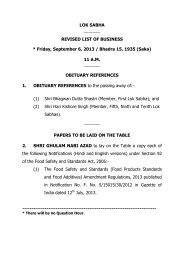
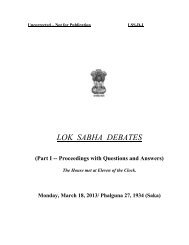

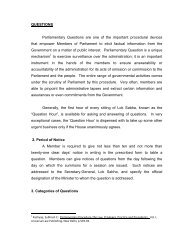
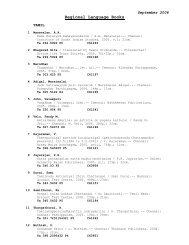

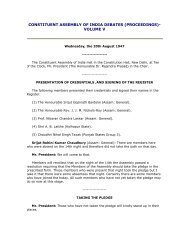
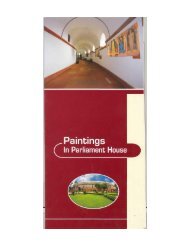
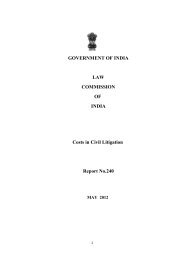
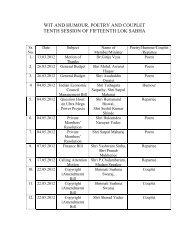
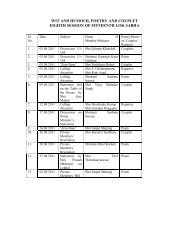

![gÉÉŌ A.]ÉŌ. xÉÉxÉÉ](https://img.yumpu.com/8015720/1/190x245/geeo-aeo-xeexee.jpg?quality=85)
